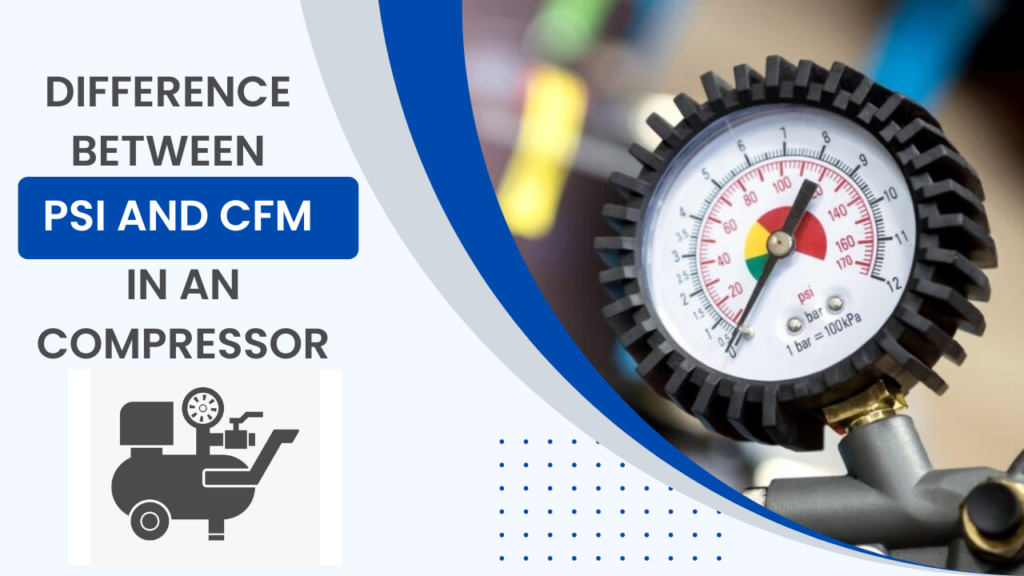If you’re looking for the right air compressor for your business, and are researching on the specifications of the product, you must have come across acronyms like PSI and CFM. These are necessary to tell you which size of air compressors are fit for your needs. Both these parameters are performance indicators of air compressors and other air-powered equipment. The main difference between PSI and CFM is that the former measures pressure and the volume of the latter measure. In this blog, we take you through a detailed understanding of both these metrics.

What is PSI?
PSI stands for pounds per square inch. Quite clearly it measures how many pounds of air occupies a square inch area. The greater the PSI value of a compressor, the greater pressure it is exerting and hence the more powerful it is considered to be. Quite simply, an air compressor with a PSI reading of 120 would indicate that it delivers 120 pounds of pressure per square inch. On an industrial compressor, the PSI value is typically displayed within the compressor system. As a convention ‘PSI’ is written in small letters.
What is CFM?
CFM stands for cubic feet per minute. This indicates the volume or output rate of the air compressor in terms of cubic feet of air per minute. Simply put, it indicates how much air is being moved per minute. CFM is always measured at a particular PSI and increases proportionately along with the horsepower applied. Domestic compressors typically offer a volume of around 2 CFM while large industrial compressors that usually run at 200 HP, can deliver up to 1000 CFM of airflow.
How are pressure and flow related in an air compressor?
To run an air compressor optimally, both volume and pressure must be sufficient. The principle isn’t very different from that of a garden pipe. When you squeeze the end of the pipe with your thumb, you are in effect reducing the space and creating less room for it to flow out. This will make the water shoot out farther. In air compressors, PSI and CFM relate to each other in a similar way.
For the purpose of mathematical calculations, the relationship of pressure with volume in a compressed system can be demonstrated by Boyle’s law which states that:
P1 x V1 = P2 x V2
(P1 and V1 represent initial pressure and volume, and P2 and V2 represent final pressure and volume.)
The risks of over-pressurisation
Many times, users may over-pressurise the air compressors to ensure enough pressure is applied for a given task. This could pile up irrecoverable costs of energy losses since an increase in PSI value invariably increases the energy consumed. It can also reduce the lifespan of your equipment as the ‘artificial demand’ (another term for over-pressurisation) can cause unnecessary wear and tear.
For any questions regarding flow rates or accurate pressure levels for your air compressor systems, feel free to get in touch with us at 022 43436655 or email us at marketing@vemc.co.in. VEMC is the authorised dealer of Elgi air compressors with a rich industry experience of over 72 years.

